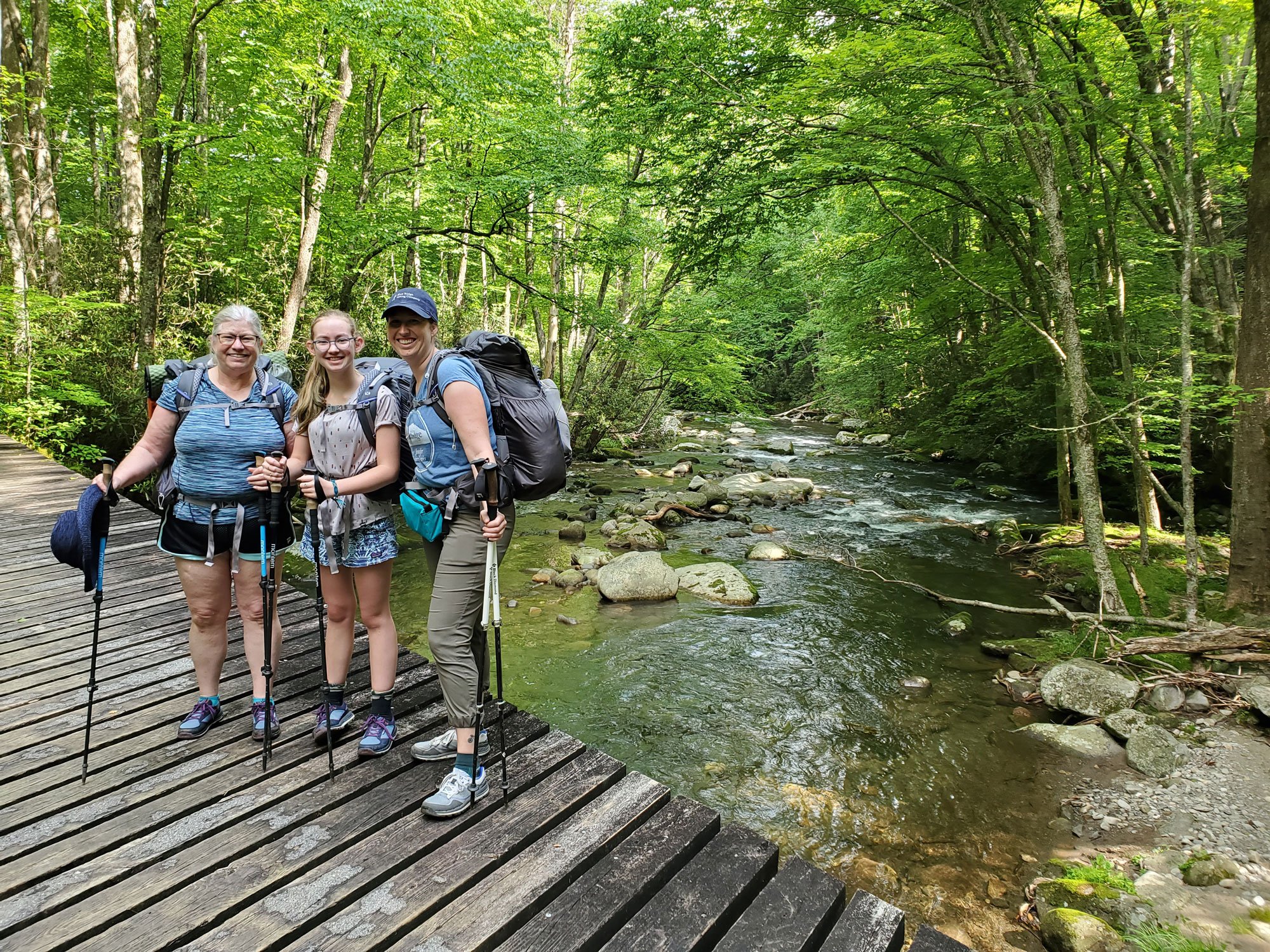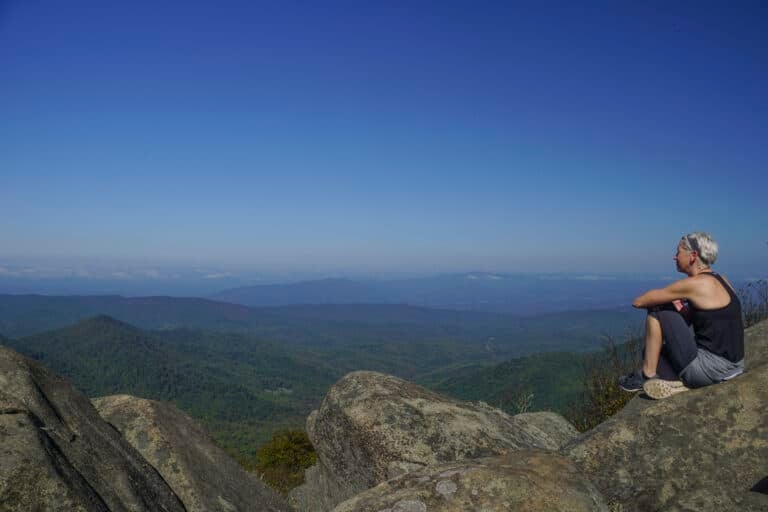Everyone’s gotta go. So here are the best practices for relieving yourself in the woods.
As the owner of Blue Ridge Hiking Company, a guide service based in Asheville, N.C., Lindsey Barr spends a lot of time teaching adults how to potty. More specifically, she teaches adults how to potty while adhering to Leave No Trace (LNT) principles.
“We host a weekly Zoom call for hikers on upcoming backpacking trips, and part of that call is talking about the ‘Three P’s’ (i.e., pees, poops, and periods),” Barr explains. “Our hope is that having this conversation well before hikers hit the trail will take away some of the anxiety around using the bathroom in the woods.”
Here are some important guidelines she shares during these restroom rundowns to help aspiring adventurers feel comfortable and minimize environmental impact.
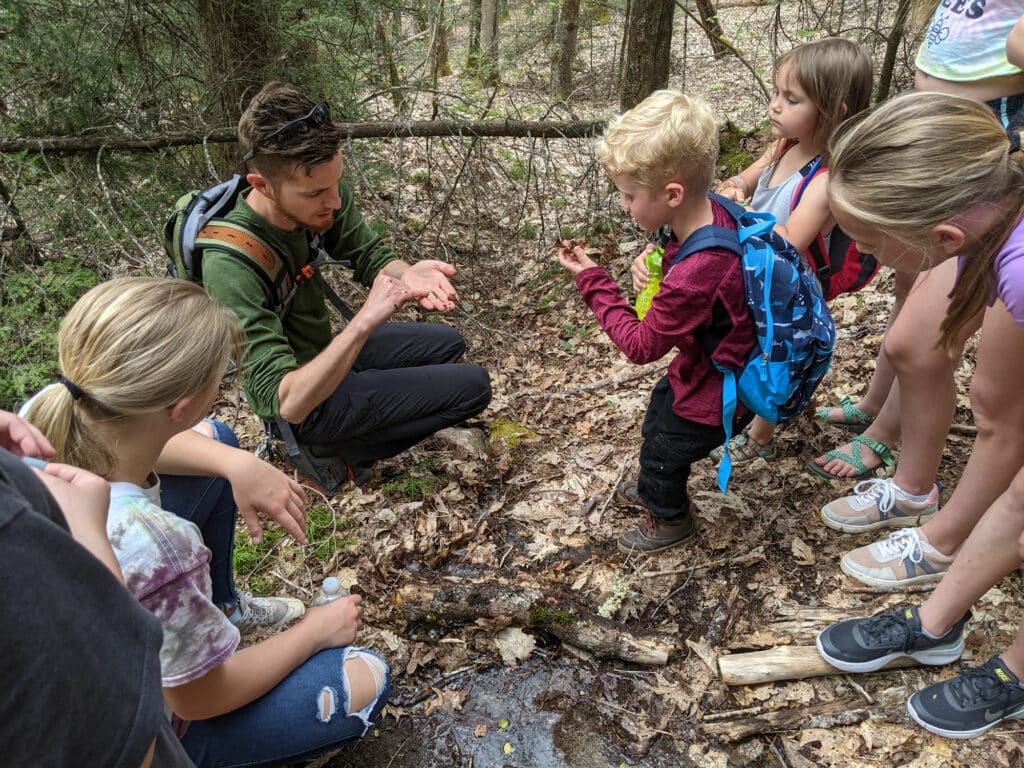
How to Pee Outdoors
Going for a wee. Having a tinkle. Making water. Whatever you want to call it, pee happens. And you should be prepared for when it does.
Step 1: Pack Your Potty Kit.
Barr recommends all hikers pack a “potty kit” before setting off for the forest. This kit should include a trowel (for poop purposes), hand sanitizer, and a small plastic baggie. Though you can pack toilet paper, you may opt for an antimicrobial pee cloth instead (more on this later).
Barr keeps her potty kit in an easily accessible pocket of her pack, away from other trash and food. If you steer clear of scented products, the kit doesn’t need to go in the bear bag at night.
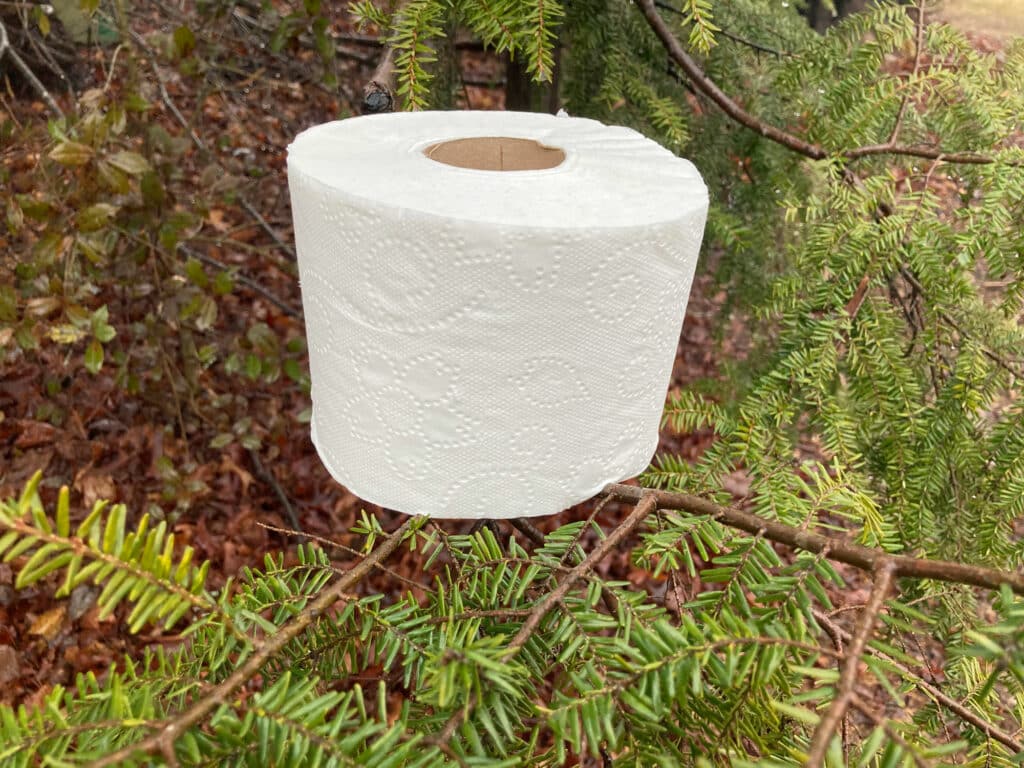
Step 2: Find Your Spot.
Maybe you chugged a liter of freshly filtered water. Or, maybe you sipped one too many campfire whiskeys. Either way, the pee-pee dance is real.
Before you wet your shorts, Barr suggests you find a secluded spot at least 200 feet (or 70 big steps) away from a water source, campsite, or trail. Though 200 feet may seem arbitrary, this is an LNT standard to help mitigate water contamination, soil disturbances, and other issues.
Step 3: Stand or Squat.
It’s now time to do the deed.
“If you stand to pee,” says Barr, “going in the woods is going to be basically the same as going at home.”
If you squat to pee, grab hold of a tree and get down low. The lower you are to the ground, the less likely you will splash on your shoes and pants.
As Barr explains, urination devices can be super helpful for the squatters among us. “There are a lot of different styles on the market, but generally, they look like a forward-facing funnel,” she says.
If you opt for a pee funnel, practice your aim in the shower before your trip. Once on the trail, rinse the device with clean water after each use and allow it to air dry.
Step 4: Choose Your T.P.
After peeing, you can shake dry, use a big leaf (avoid poison ivy, obviously), or wipe with toilet paper. If you wipe with T.P., pack out the soiled paper in a plastic bag. Alternatively, you can use an antimicrobial pee cloth—Barr’s T.P. of choice.
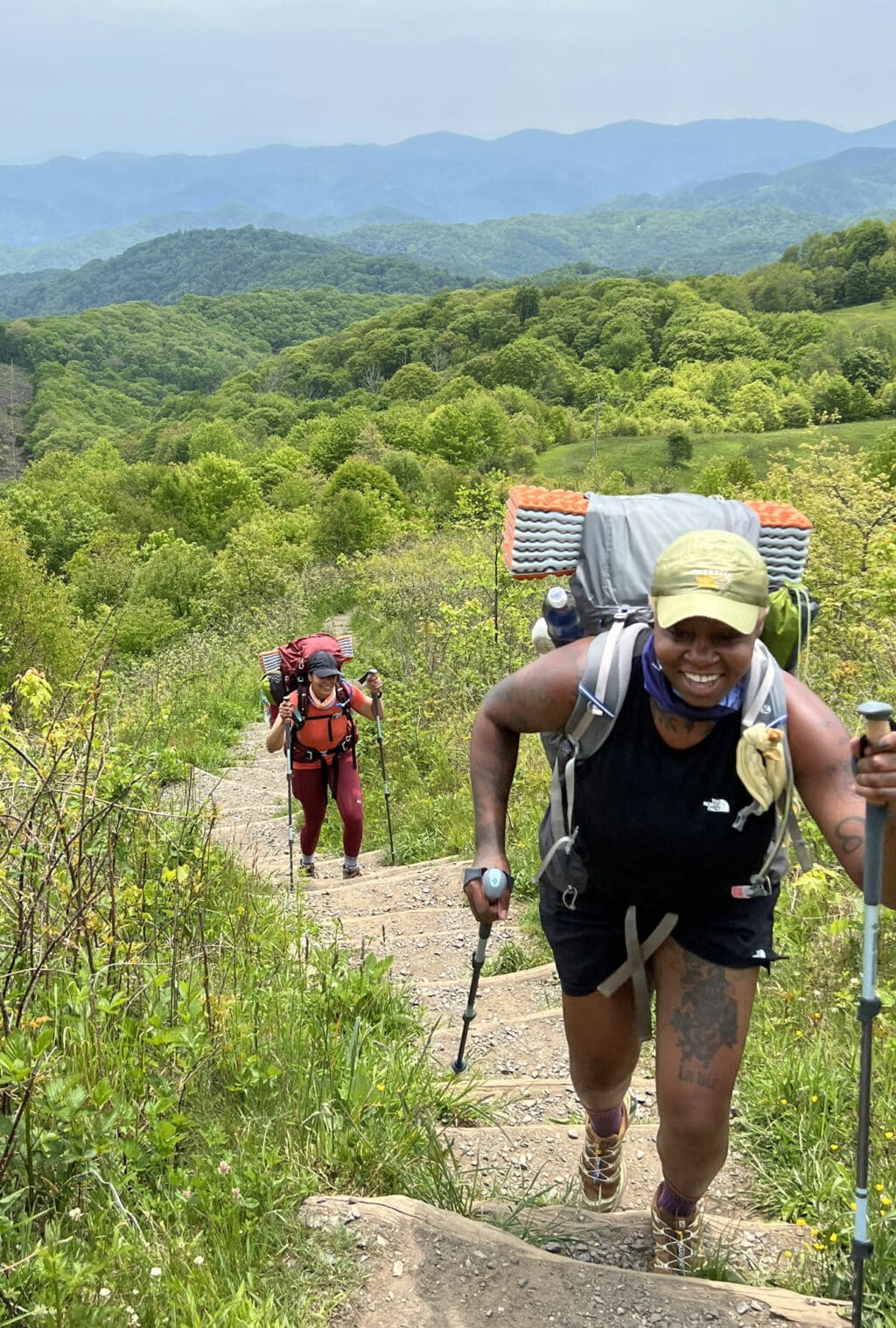
How to Poop Outdoors
Let’s face it: Going “number two” outside is a bit more nerve-wracking than peeing. But “it’s a lot easier and less scary than people think,” Barr assures.
Step 1: Dig a Cathole.
Just like with peeing outside, pooping outside requires that you pack a potty kit and then find a spot at least 200 feet away from a water source, campsite, or trail.
However, before you pop a squat and do the doo, you must use a trowel to dig a cathole at least six to eight inches deep and four to six inches in diameter. Since this may take some time, don’t wait until your chorizo chimichanga or second cup of gas station coffee has reached a crescendo.
Pro Tip: According to Barr, the soil microbiome in the Southern Appalachians is adequate to break down solid human waste. But in super rocky, arid places or times in which the ground is frozen, hikers may need to pack out their excrement using a human waste bag. “Hikers should always check the regulations for their specific area before hitting the trail,” Barr advises.
Step 2: Poop and Cover.
After digging a cathole, it’s time to, ahem, drop your load. Once you’re done, throw in a handful of soil and give it a stir with a sturdy stick. This speeds up the decomposition process.
Next, use your trowel to cover your waste with dirt. Be careful not to contaminate your trusty tool with feces.
Step 3: Pack Out Your T.P.
Once your booty is wiped, place the soiled toilet paper in a plastic baggie. If the idea of locking eyes with poopy paper turns your stomach, opt for an opaque bag.
Step 4: Sanitize Your Hands.
A small squeeze of biodegradable soap and water will work. An alcohol-based hand sanitizer will suffice, too.
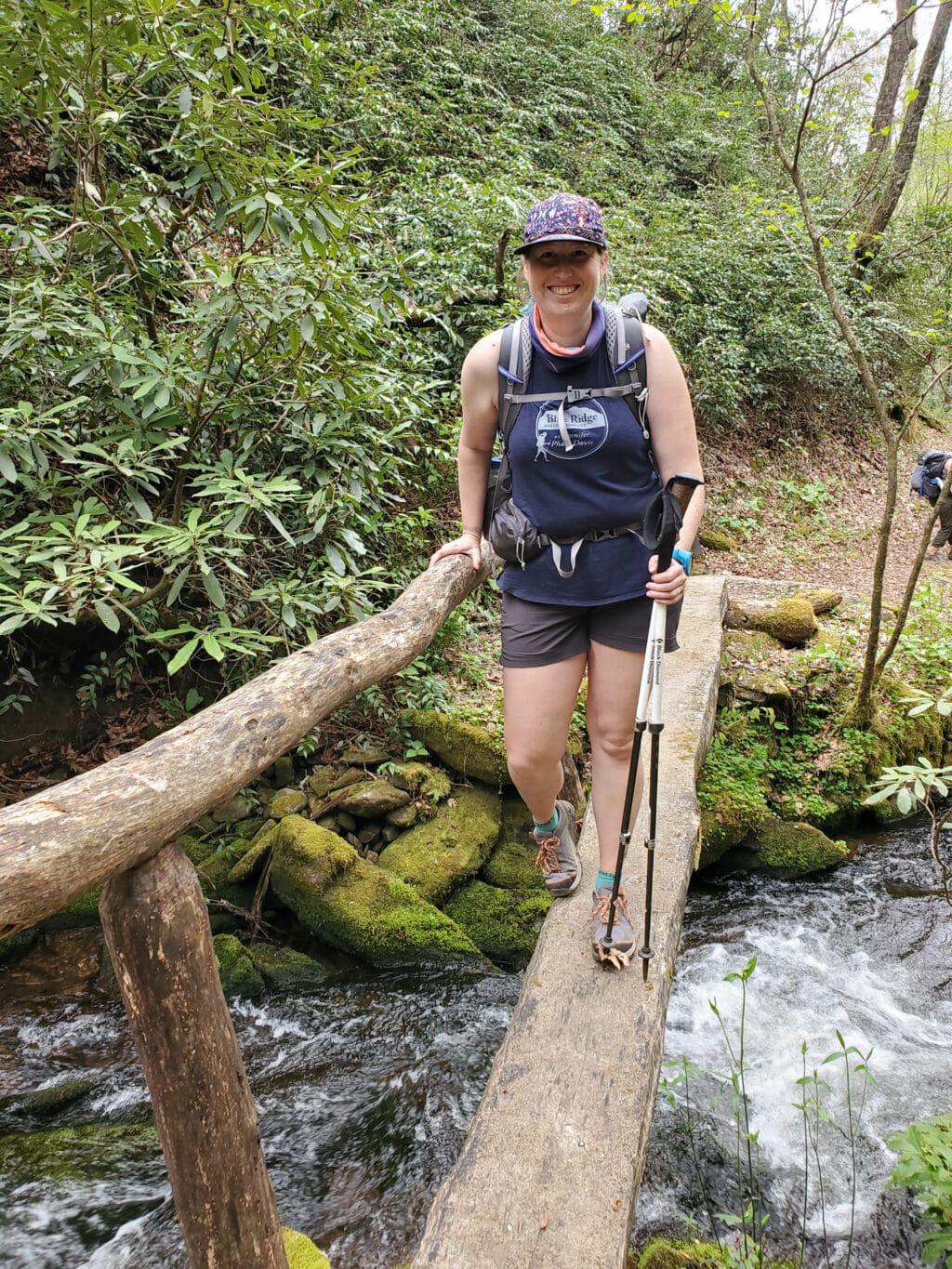
How to Manage Your Period Outdoors
According to Barr, there are lots of myths about having your period in the woods.
“We even occasionally hear from clients that certain dates won’t work because they’re expecting to have their cycle, and they’ve heard it isn’t possible to manage their cycle on a backpacking trip,” says Barr. “And that absolutely isn’t true.”
Menstruating on the trail just requires a bit of forethought. If you use pads or tampons, for instance, those will need to be packed out. If you use period underwear, those will also need to be packed out.
If you use a menstrual cup, you will need to clean your hands, remove the cup, and then empty the contents into a cathole. Next, rinse the cup with potable water and reinsert. “Then,” says Barr, “fill your cathole like you would when you go number two.”

Responsible Recreation
For more advice on minimizing our impact in the backcountry, we chatted with Justin Harris, owner of White Blaze Outdoors in Abingdon, Va.
Tip 1: Only Camp in Designated Areas.
Wildlife managers carefully select campsites. If you go rogue and pitch a tent elsewhere, you could unknowingly cause habitat destruction. “Even if you have to hike a little further or backtrack, it’s important to always stay within designated camping areas,” Harris advises.
Tip 2: Pack Out All Trash.
Growing up, Harris thought little about tossing banana peels or apple cores into the forest. “It didn’t seem like a big deal,” he admits. But after studying biology at Emory & Henry College, the Virginia native realized his foible. “Biodegradable or not, food is still going to entice wild animals,” he explains.
Tip 3: Educate Yourself.
From group size limits to campfire regulations, there can be a lot to learn when recreating. According to Harris, it’s our responsibility to understand any rules that may be in place to protect a particular ecosystem. “Do a little homework before you head into the woods,” he says. “And if you choose to go with a guide service, don’t be afraid to ask questions you may think are embarrassing or stupid. We love to help people learn.”
Cover photo: Blue Ridge Hiking Company introduces beginners to Leave No Trace principles. Photo courtesy of Blue Ridge Hiking Company
